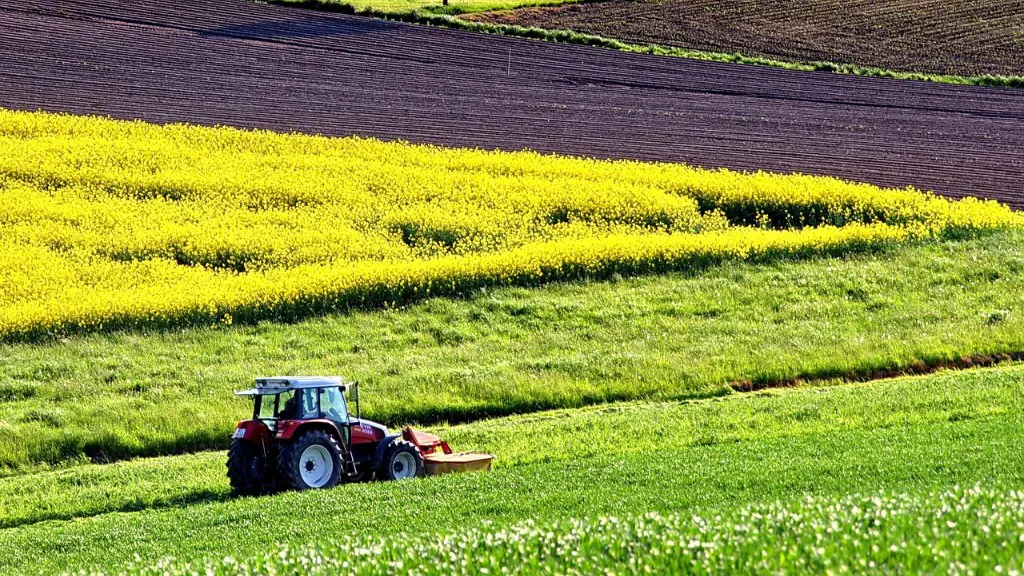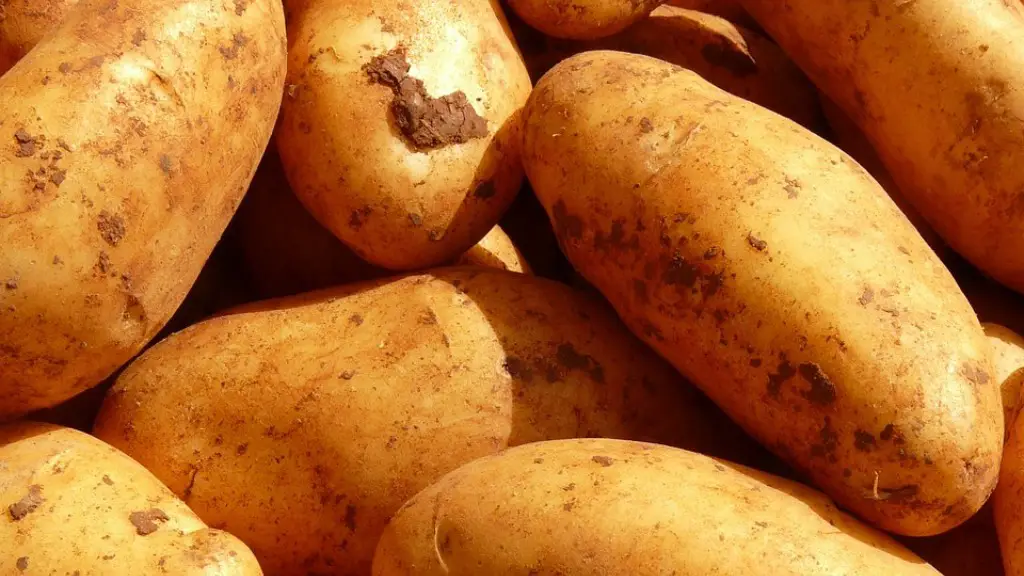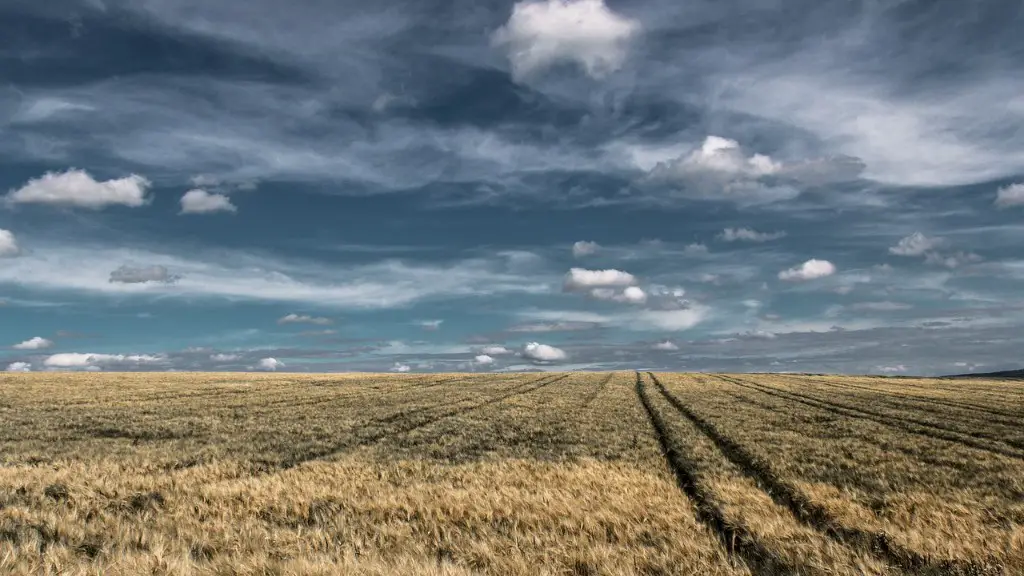Sustainable Agriculture is a type of agriculture that focuses on producing long-term crops and livestock while protecting the environment. The main elements of sustainable agriculture are:
– Soil conservation
– Water conservation
– Energy conservation
– Crop rotation
– Use of organic fertilizers
The elements of sustainable agriculture are:
1. Crop rotation
2. Soil conservation
3. Use of natural inputs
4. Water conservation
5. Energy conservation
6. Use of organic farming methods
7. Promoting biodiversity
What are the 3 main components of sustainable agriculture?
The basic goals of sustainable agriculture are environmental health, economic profitability, and social and economic equity. These goals are sometimes referred to as the “three legs” of the sustainability stool.
Sustainable agriculture is an approach to food production that is designed to meet the needs of the present without compromising the ability of future generations to meet their own needs. It is an approach that seeks to balance the three key goals of sustainability: environmental health, economic profitability, and social and economic equity.
There are a number of ways to achieve these goals, but some common practices include using more environmentally-friendly production methods, investing in research and development to improve efficiency and reduce environmental impacts, and promoting fair trade and equitable economic relationships.
The two main types of farming are sustainable farming and conventional farming. The main components of both are exactly the same: soil management, crop management, water management, disease/pest management and waste management. The main difference between the two is that sustainable farming uses methods that protect the environment and conserve natural resources, while conventional farming uses methods that can damage the environment and deplete natural resources.
What are 4 sustainable agriculture practices
Sustainable agriculture practices are those that protect and improve the natural resources that farmers rely on, including soil, water, and biodiversity. They also support the economic viability of farmers and the long-term health of rural communities.
There are many sustainable agriculture practices that farmers can adopt, including rotating crops, planting cover crops and perennials, reducing or eliminating tillage, and applying integrated pest management (IPM). Farmers can also integrate livestock and crops, adopt agroforestry practices, and manage whole systems and landscapes.
The key to successful sustainable agriculture is to choose practices that work best for the specific farm and region. By doing so, farmers can protect and enhance natural resources, while also producing food, fiber, and fuel for a growing world population.
Sustainable agriculture is an approach to food production that seeks to protect and improve the natural environment, while also providing for the needs of people. Ikerd (1990) describes sustainable agriculture operations as those that are “capable of maintaining productivity and usefulness to society indefinitely.” Such systems must be resource-conserving, socially supportive, commercially competitive, and environmentally sound.
What are sustainable elements?
The four pillars of sustainability are human, social, economic and environmental. They are the foundation for a sustainable future.
Human sustainability is about meeting the needs of all people. It includes ensuring that everyone has the opportunity to live a healthy and productive life.
Social sustainability is about creating a fair and just society. It includes ensuring that everyone has the opportunity to participate in the decisions that affect them.
Economic sustainability is about creating a prosperous economy. It includes ensuring that businesses are profitable and that jobs are created.
Environmental sustainability is about protecting the environment. It includes ensuring that natural resources are managed responsibly and that pollution is reduced.
Nitrogen, phosphorus, potassium, and sulphur are the most important nutrients for plants. The others, such as calcium, iron, magnesium, manganese, zinc, copper, boron, molybdenum, chlorine, sodium, cobalt, nickel, and silicon, are also important but in smaller amounts.
Which is not an element of sustainable agriculture?
The term “sustainable agriculture” has come to be used very broadly to describe a wide range of different farming practices and philosophies. However, at its most basic, sustainable agriculture is an approach to farming that aims to protect and enhance the natural resources and ecosystems that support agricultural production.
This means that sustainable agriculture practices must be designed to be economically viable, while also protecting and enhancing environmental quality. A farm that can “produce perpetually” without having negative effects on the environment is not sustainable agriculture.
There are plenty of things we can do to make our lifestyles more sustainable and eco-friendly. One way is to reuse paper and plastic bags for shopping instead of opting for new ones each time. Another is to go paperless with our documents as much as possible. Additionally, we can avoid disposable kitchen items and switch to eco-friendly bathroom and household cleaning products. Finally, recycling old sneakers is a great way to give them new life and keep them out of landfills.
What is an example of sustainable agriculture
No-tillage farming and the careful application of on-farm nutrient sources can help to build soil organic matter, reduce energy costs, control pests, and boost income. By more efficiently using on-farm resources, farmers can improve their bottom line while also helping to protect the environment.
Sustainable agriculture is a hot topic these days. Farmers are looking for ways to protect the environment and expand natural resources. They want to make the best use of nonrenewable resources.
What are the 4 principles of sustainability?
The term “sustainability” refers to the ability of an organism or ecological system to remain diverse and productive over an extended period of time. In order for something to be sustainable, it must be able to be maintained at a certain level without causing depletion or damage to the resources it relies on.
The four principles of sustainability are:
1. Human Sustainability:This refers to the ability of people to meet their needs without damaging or depleting the resources they rely on. It includes factors such as clean air and water, food security, shelter, and access to healthcare.
2. Social Sustainability: This principle acknowledges the interdependence of people and the need for social cohesion and equity. It involves creating systems and institutions that are just, participatory, and inclusive.
3. Economic Sustainability: This principle is about meeting our needs in ways that don’t damage the environment or deplete natural resources. It includes using renewable resources, efficiently using energy and water, and reducing waste.
4. Environmental Sustainability: This principle is about protecting and restoring the natural environment so that it can continue to support life on Earth. It includes actions such as conserving biodiversity, reducing pollution,
The Sustainable Development Goals (SDGs) are a set of 17 “Global Goals” committed to by all United Nations Member States in 2015. The 17 SDGs cover a broad range of social and economic development issues. They are designed to be a “blueprint to achieve a better and more sustainable future for all”.
The first goal of the SDGs is to end poverty in all its forms. This includes extreme poverty, which is defined as living on less than $1.90 a day, as well as moderate poverty, which is defined as living on $3.10 a day or less. The SDGs also aim to end hunger and achieve food security, as well as to improve nutrition and promote sustainable agriculture.
The second goal of the SDGs is to achieve gender equality and empower all women and girls. This includes ensuring that all girls have access to quality education, as well as ensuring that women have equal opportunities in the workforce. The SDGs also aim to end all forms of violence against women and girls, and to eliminate all harmful practices, such as child marriage and Female Genital Mutilation (FGM).
The third goal of the SDGs is to ensure that all people have access to quality health care and
to
What is the most sustainable element
Titanium is the most sustainable chemical element, regardless of the year. This is because it is non-toxic, durable, and has a low environmental impact. Additionally, titanium can be recycled and reused without losing its properties.
Sustainable design is an approach to designing buildings and other structures that minimizes the negative environmental impact of the development. Sustainable design optimization site potential to reduce the need for non-renewable energy consumption, use environmentally preferable products, protect and conserve water, and enhance indoor environmental quality.
What are the two elements of agriculture?
In less developed regions, subsistence agriculture is still the primary means of obtaining food, while in more developed regions, commercial agriculture is more prevalent. Subsistence agriculture involves small-scale production for local consumption, while commercial agriculture is geared towards producing crops for sale on the open market. One of the main differences between the two is the amount of land and labor required. Subsistence agriculture is typically carried out on smaller plots of land with fewer workers, while commercial agriculture requires larger tracts of land and a greater labor force.
The agriculture sector plays a vital role in the economic development of a country. It is the backbone of the Indian economy as it contributes around 17% to the overall GDP. The sector provides employment to around 54% of the workforce in India.
The country is self-sufficient in foodgrain production and is also the world’s second-largest producer of rice and wheat. India is the world’s largest producer of milk, spices, pulses, jute, and tea. The country is also the second-largest producer of fruits and vegetables.
The agriculture sector is of great importance as it helps in the eradication of poverty and hunger. It also contributes to the industrialization process of a country. The sector provides raw materials to the industry and also ensures the availability of food for the population.
The agriculture sector is important not only for the economic development of a country but also for the wellbeing of its citizens.
Which of the elements affect agriculture
There are many factors that influence agriculture. Climate, soil type, irrigation, technology, and population density are some of the most important ones. Each of these factors can have a significant impact on agriculture, and it is important to understand how they work together.
Climate is a major factor in agriculture. The amount of sunlight, temperature, and rainfall all play a role in how crops grow. Soil type also plays a role in agriculture. Different types of soil can be better or worse for growing certain crops. Irrigation is another important factor, as it can help to provide water to crops when rainfall is insufficient. Technology is also a key factor, as it can help farmers to improve yields and increase efficiency. Finally, population density can also impact agriculture, as a higher population density can lead to more demand for food.
Sustainable agriculture is an approach to food production that integrates three main goals: environmental health, economic profitability, and social equity. A variety of philosophies, policies and practices have contributed to these goals, but a few common themes and principles weave through most definitions of sustainable agriculture.
The first common theme is the stewardship of natural resources. Sustainable agriculture seeks to protect and improve the environment by using resources wisely and efficiently. This often includes using less chemical inputs, conserving water, and protecting soil health.
The second common theme is the need for economic viability. Sustainable agriculture must be economically viable in order to be sustainable in the long-term. This means that farmers must be able to make a living from their farm businesses.
The third common theme is social equity. Sustainable agriculture should provide benefits for all members of society, not just those directly involved in food production. This includes things like ensuring fair prices for farmers, providing safe and healthy working conditions, and protecting the rights of farmworkers.
Conclusion
There are a number of elements that are important for sustainable agriculture. These include things like conserving natural resources, protecting and improving the environment, using less toxic and more sustainable methods for managing pests, and promoting the health and well-being of animals.
The elements of sustainable agriculture are production, including but not limited to food security and environmental management; social, including but not limited to human health and community development; and economic, including but not limited to financial viability and resource use efficiency.





